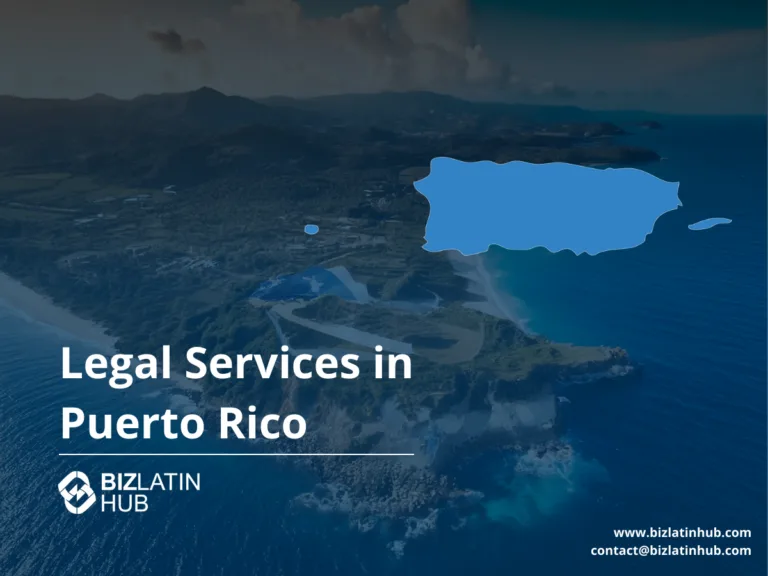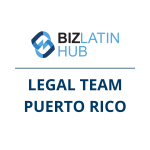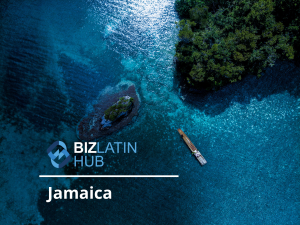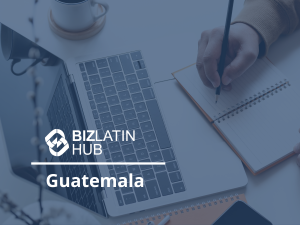In the world of business, liquidation can feel like a daunting reality. Corporations in Puerto Rico often face this situation, prompting an urgent need for understanding the process. Ensuring awareness of the steps involved can make a significant difference in navigating corporate dissolution.
Corporate liquidation refers to closing a business while addressing debts and obligations. In Puerto Rico, this process is influenced by legal frameworks that shape how it unfolds. Notably, the Puerto Rico Oversight, Management, and Economic Stability Act (PROMESA) plays a crucial role in this context.
This guide will explore the liquidation process for corporations in Puerto Rico in detail. It will examine the impact of PROMESA, the Federal Oversight Board’s function, and the obligations of companies. Whether you are a business owner or a creditor, understanding these insights is vital for navigating liquidation effectively.
What is Corporate Liquidation in Puerto Rico?
Corporate liquidation is the process of shutting down a business. This involves selling assets, paying off debts, and distributing any remaining assets to shareholders or owners. The procedure is guided by laws and rules to ensure a smooth end to the business entity.
Here is an outline of the process:
- Assessment of Financial Status: Analyze the company’s finances to decide the best way to sell assets and settle liabilities.
- Selling Assets: Convert company assets into cash to pay off debts.
- Paying Debts: Pay creditors from the cash obtained from asset sales.
- Distribution: Distribute leftover assets to shareholders or owners.
Corporate liquidation impacts many stakeholders:
- Shareholders and Owners: They receive remaining assets after debts are paid.
- Employees: Jobs and benefits may be affected.
- Creditors: They get paid from asset sales.
Understanding corporate liquidation is important for everyone involved. It helps manage risks and outcomes effectively. Following the right processes ensures the rights of shareholders, employees, and creditors remain protected.
Understanding PROMESA and Its Impact
PROMESA, enacted in 2016, provides Puerto Rico with a legal framework to restructure over $70 billion in debt and over $55 billion in unfunded pension liabilities. The act aims to achieve fiscal stability in Puerto Rico.
Key aspects of PROMESA include:
- Title III: Classifies creditors into groups based on their legal claim rights. This classification impacts how debt adjustments are negotiated.
- Oversight Board: This board is charged with negotiating debt reduction plans. A federal court must confirm these plans for them to take effect.
- Bankruptcy Laws: PROMESA prevents Puerto Rico from creating its own bankruptcy laws. Public corporations cannot file for Chapter 9 protection, making the restructuring process unique.
The implementation of PROMESA requires bondholders and creditors to understand the act’s details. Court decisions may further clarify their rights.
By restructuring debt through PROMESA, Puerto Rico aims to stabilize its financial situation. This process influences the state’s economic growth and financial stability.
Role of the Federal Oversight Board
The Federal Oversight Board plays a key role in managing Puerto Rico’s finances under the PROMESA law. This board, officially called the Financial Oversight and Management Board, consists of seven members. The President appoints these members, ensuring at least one is a resident of Puerto Rico.
Members need expertise in finance, municipal bond markets, management, or law. This guarantees strong oversight of Puerto Rico’s fiscal plans. The board has major control over fiscal plans and balanced budgets for Puerto Rico and its public corporations.
| Federal Oversight Board Facts |
|---|
| Number of Members: |
| Appointed By: |
| Resident Requirement: |
| Key Knowledge Areas: |
PROMESA allows the board to impose a stay on creditor enforcement remedies. This helps in restructuring the debt of Puerto Rico and its struggling public entities. The board’s actions aim to help achieve financial stability and protect against financial crises. Their work is crucial for improving Puerto Rico’s access to capital markets and maintaining fiscal order.
Powers of the Federal Oversight Board
The Federal Oversight Board holds significant power in managing Puerto Rico’s fiscal plan. Created under PROMESA, it controls the Commonwealth’s budget and oversees debt restructuring. The President of the United States appoints its members, ensuring at least one Puerto Rican resident is included.
Here are the key powers of the Oversight Board:
- Budget Control: The Board manages and approves sustainable budgets. It can impose hiring freezes and prohibit new contracts.
- Debt Restructuring: The Board facilitates negotiations for restructuring debts. If negotiations fail, it can initiate a court-supervised process similar to bankruptcy.
- Creditor Remedies Stay: The Board can halt creditor enforcement actions. This stay allows for a bankruptcy-like restructuring without ongoing litigation if a default occurs.
The Board’s authority aims to achieve financial stability and manage outstanding debts. Its involvement is crucial for Puerto Rico’s economic growth and access to capital markets.
Immediate Effects on Creditor Remedies
The Puerto Rico Oversight, Management, and Economic Stability Act (PROMESA) affects creditor remedies significantly. PROMESA imposes a stay on creditor enforcement remedies. This stay limits creditors’ ability to pursue collections during Puerto Rico’s restructuring.
The financial control board under PROMESA oversees fiscal plans and budgets. These plans directly impact creditor claims and debt recoveries. With PROMESA, the debt obligations of Puerto Rico and its public corporations can be restructured. This process affects the priority and recovery prospects for creditors.
Effects on Creditors:
- Limited ability to pursue collections
- Priorities and recovery affected by fiscal plans
- Restructuring may change recovery prospects
Creditors who provided loans, goods, or services may find their rights impacted. PROMESA aims to bring solvency to Puerto Rico. It seeks to improve access to capital markets, which may influence creditor recoveries over time.
Table: Key Terms
| Term | Definition |
|---|---|
| PROMESA | Law imposed to restructure Puerto Rico’s debt |
| Stay | Temporary halt on enforcement remedies |
| Restructuring | Reorganization of debts and obligations |
Through PROMESA, Puerto Rico works towards financial stability, indirectly affecting creditors.
Debt Restructuring Processes Under PROMESA
In January 2022, Puerto Rico restructured $33 billion in liabilities and over $55 billion in pension liabilities. This adjustment reduced total debt service payments by over 60%. The move saves Puerto Rico more than $50 billion and lowers debt payments from 25 cents of every tax dollar to under 7 cents. A pension reserve trust received $10 billion in planned contributions over a decade to safeguard pensions.
PROMESA, a federal law, guides this restructuring. It grants federal district courts limited powers. Courts approve petitions, confirm adjustment plans, and monitor implementation. They do not oversee debtor operations. Courts in San Juan use this framework.
PROMESA allows Puerto Rico to secure or unsecured post-petition financing. It uses sections of the Bankruptcy Code for this purpose. This enhances Puerto Rico’s ability to borrow during debt adjustments.
Key Promesa Elements:
- Restructuring of $33 billion in debt.
- Creation of a $10 billion pension trust.
- Reduction of debt servicing to below 7% of tax revenue.
Through PROMESA, Puerto Rico aims for financial stability and improved economic growth. This approach supports its access to capital markets and enhances public corporations’ sustainability.
Analyzing Puerto Rico’s Financial Landscape
Puerto Rico faces significant financial challenges. The Government Development Bank (GDB) is phasing out operations over 10 years. This decision came after a fiscal plan approval by the financial oversight board. Since April 2016, GDB has operated as a shell entity. This followed a state of emergency declaration by Puerto Rico’s former governor.
In May 2016, the GDB defaulted on $422 million in debt. This default highlighted the territory’s dire financial situation. The oversight board also approved recovery plans for other entities. These include the island’s highway, water authorities, and the power utility PREPA.
Puerto Rico’s broader fiscal efforts include the PROMESA rescue law. PROMESA aims to stabilize the territory’s economy. Below is a summary of key entities and financial actions:
| Entity | Action |
|---|---|
| Government Development Bank | Winding down over 10 years |
| Highway Authority | Part of fiscal recovery plan |
| Water Authority | Part of fiscal recovery plan |
| Power Utility (PREPA) | Part of fiscal recovery plan |
Puerto Rico’s financial strategy aims to improve economic stability. The steps include addressing outstanding debts and restructuring public corporations. The goal is to foster economic growth and access to capital markets.
Types of Creditor Relationships in Puerto Rico
In Puerto Rico, creditor claims follow a structured order during entity liquidation. The priority list includes administrative expenses, secured creditors, unsecured creditors, and shareholders at the end.
Secured creditors receive special treatment. Their claims are backed by collateral. This gives them higher priority than unsecured creditors and shareholders.
Unsecured creditors have no collateral support. This group includes depositors, bondholders, and suppliers. These entities must wait for secured creditors to recover their claims first.
Creditors must submit a Proof of Debt to the liquidator. The liquidation notice specifies deadlines. Missing this deadline can lead to claims being disallowed.
The following table illustrates the hierarchy:
| Priority Level | Type |
|---|---|
| 1 | Administrative Expenses |
| 2 | Secured Creditors |
| 3 | Unsecured Creditors |
| 4 | Shareholders |
The liquidator manages asset distribution. They follow the established priority. This process affects how much each creditor group recovers.
Understanding these relationships helps creditors navigate Puerto Rican liquidations. Early action and adherence to deadlines are crucial.
Overview of Completed Debt Restructurings
The Oversight Board has significantly reduced Puerto Rico’s debt. They lowered liabilities from over $70 billion to $37 billion. This restructuring is set to save the island more than $50 billion in debt service payments.
PROMESA’s Title VI requires all creditor groups to accept the debt plan before court confirmation. The focus is on reaching agreements that benefit all stakeholders. This supports Puerto Rico’s financial recovery.
The debt restructuring aimed to achieve sustainable debt levels. The Oversight Board negotiates plans to reduce financial distress.
Key Achievements:
- Debt Reduction: From $70 billion to $37 billion.
- Debt Service Savings: Over $50 billion.
Objectives:
- Achieve consensus among creditors.
- Mitigate financial distress.
- Support long-term economic stability.
These efforts are crucial in stabilizing Puerto Rico’s economy and supporting future growth. The outcomes should guide future fiscal planning and economic development for the island.
Key Operational Entities in Liquidation
In Puerto Rico, liquidation involves closing a corporation or bank and selling its assets. This action settles debts and distributes remaining assets to shareholders or owners.
Corporate Liquidation:
- Sell corporate assets
- Settle debts
- Distribute assets to shareholders
Bank Liquidation:
- Close the bank
- Liquidate bank assets
- Pay depositors and creditors
Key entities involved include the Government Development Bank and the legal entity in question. Understanding these processes is crucial for all involved, especially foreign account holders.
Distinct laws handle each liquidation type, highlighting their differences.
Important Considerations:
- Familiarize with bankruptcy laws
- Know the role of legal counsel
- Understand fiscal plans and obligations
The Management and Economic Stability Act impacts liquidation processes. It affects financial stability and access to capital markets. In Puerto Rico, the federal district oversees these cases, often with input from financial institutions.
Liquidation impacts economic growth and the distribution of assets in the region. Stakeholders must stay informed to manage expectations and navigate risks effectively.
The SURI Platform and Its Role
The SURI Platform in Puerto Rico began in October 2016. It was set up by the Puerto Rico Treasury Department. SURI helps manage tax collection and payment. This includes sales and use tax, excise taxes, and income tax.
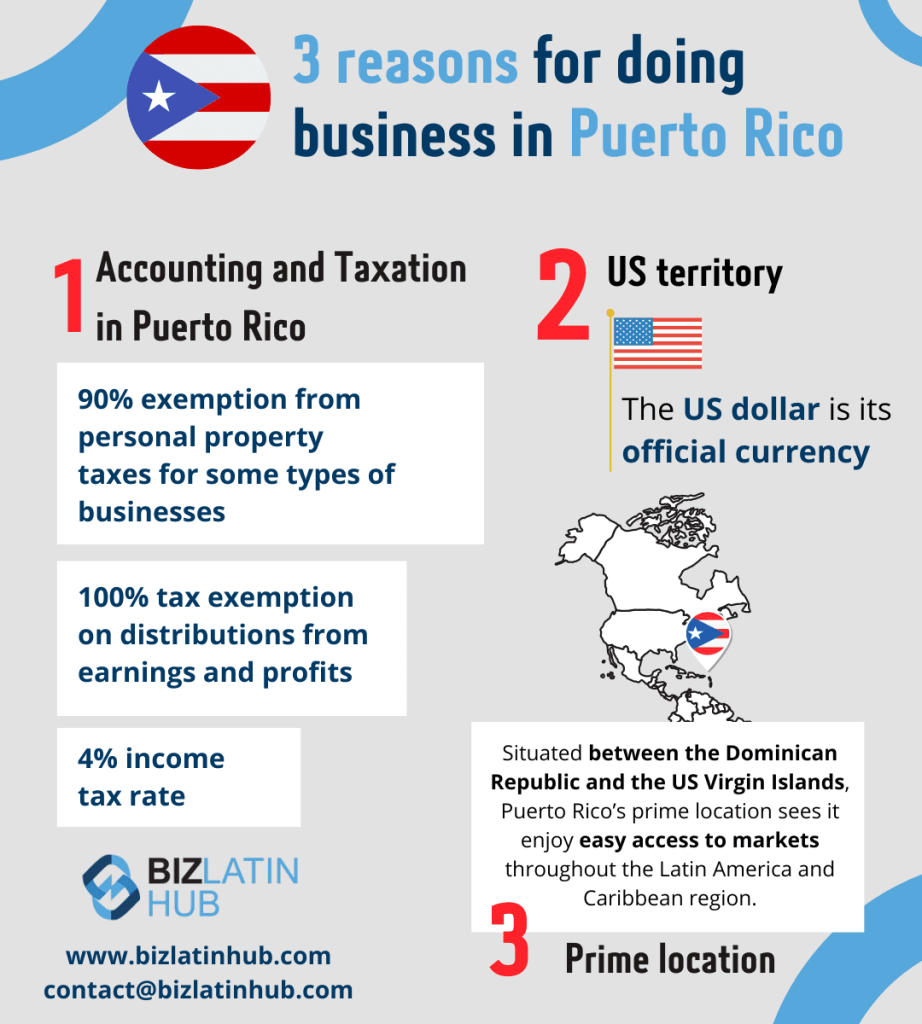
All businesses in Puerto Rico must register with SURI. This requires submitting a copy of the Employer Identification Number (EIN) confirmation letter. SURI ensures businesses follow tax rules and report information correctly. It also helps with tax withholding processes.
When a business registers for a sales and use tax account, the SURI platform issues a Merchants Registration Certificate. This certificate outlines a business’s tax collection duties. SURI is vital for tax treatment and identifying processes. It impacts how businesses handle tax returns and elections.
Here is a simple list of what SURI covers:
- Sales and Use Tax
- Excise Taxes
- Income Tax
The SURI Platform is key to Puerto Rico’s tax system. It ensures that businesses meet their tax obligations and helps in reporting and withholding information. This platform is essential for maintaining financial stability in Puerto Rico.
Regulatory Requirements for Liquidation
Liquidation in Puerto Rico follows specific regulatory requirements. Liquidator Role: The liquidator can appoint an Assistant Liquidator. This assistant has the same powers as the liquidator. Both can hire legal counsel, accountants, and appraisers.
Personnel Compensation: The Receivership Court must approve compensation for the Assistant Liquidator and other hired professionals.
Regulatory Framework:
- Corporate Liquidation: Governed by general insolvency and bankruptcy laws.
- Bank Liquidation: Controlled by specific banking regulations to protect depositors and ensure financial stability.
Rationale:
- Protect depositors
- Maintain financial stability
Both corporate and bank liquidations require careful oversight to prevent systemic risks.
Table: Liquidation Governance
| Liquidation Type | Governing Laws | Purpose |
|---|---|---|
| Corporate Liquidation | Insolvency and Bankruptcy Laws | General Debt Resolution |
| Bank Liquidation | Specific Banking Regulations | Depositor Protection and Financial Stability |
Understanding these requirements helps in managing liquidation efficiently. Proper regulatory oversight is essential in preventing financial instability.
Merchant Registration Certificate Explained
Businesses in Puerto Rico must register as merchants through the SURI platform with the Puerto Rico Treasury Department. Once registered, they receive a Merchants Registration Certificate. This certificate outlines a business’s tax responsibilities.
Key Points of the Merchants Registration Certificate:
- Tax Collection: Indicates if a business should collect sales and use tax or if it is exempt.
- Type of Operations: Shows whether the business is an exhibitor or temporary.
- Display Requirement: Must be clearly displayed at the business location. Not displaying it may result in fines.
The certificate plays a crucial role in tax compliance. It ensures that businesses understand their role in tax collection and helps enforce Puerto Rico’s tax regulations.
Summary Table:
| Type | Description |
|---|---|
| Tax Collection Responsibilities | Collect sales tax or exemption status is specified. |
| Business Type | Indicates if the business is a regular, exhibitor, or temporary operation. |
| Display Rule | Must be visible at the business premises to avoid penalties. |
Adhering to these guidelines maintains legal compliance and supports financial stability in Puerto Rico.
Sales and Use Tax Considerations
Sales and Use Tax (SUT) in Puerto Rico is important for businesses. The standard SUT rate is 11.5%. Business-to-business transactions often have a 4% SUT. When importing goods, a use tax of 11.5% is applied.
Some transactions can be exempt. Sales to government entities may qualify, but they need a Certificate of Exempt Purchases.
Here’s a quick breakdown:
| Transaction Type | Tax Rate |
|---|---|
| Regular sales | 11.5% |
| Business-to-business | 4% |
| Importation of goods | 11.5% |
For services in Puerto Rico, payments over USD 500 usually face a 10% withholding tax. However, service providers with waivers can avoid this tax.
Merchants must register with the Puerto Rico Treasury Department. This department issues a Merchants Registration Certificate. This certificate designates whether a merchant must collect SUT or is exempt.
Considerations include:
- Ensuring you hold relevant exemption certificates.
- Understanding tax rates for all relevant transactions.
- Registering properly as a merchant.
Following these guidelines can help your business comply with Puerto Rico tax laws.
Importance of Municipal Licenses
Municipal licenses play a crucial role in Puerto Rico’s local economic stability. Each of the 78 municipalities can impose a municipal license tax on businesses. This tax on gross receipts varies. General businesses face a tax capped at 0.5%, while financial entities may be taxed up to 1.5%.
Key Points:
- Registration Requirement: Businesses must register with the municipality. This process often includes obtaining a Single Use Permit.
- Waivers Available: In some cases, registration may be waived, especially when businesses adapt to new technologies.
- Tax Incentives: Some tax incentives can reduce or eliminate the municipal license tax, providing financial relief to companies.
| Business Type | Tax Rate |
|---|---|
| General Businesses | Up to 0.5% |
| Financial Entities | Up to 1.5% |
The system ensures legal recognition and supports financial stability. Understanding these regulations is essential for compliance and potential cost savings.
Case Study: Liquidation of Euro Pacific Bank
Euro Pacific Bank is currently in liquidation. This process is directed by a Consent Order for Liquidation and Dissolution from the Puerto Rico Office of the Commissioner of Financial Institutions (OCIF).
Receiver Oversight
- Wigberto Lugo Mender, Esq. is the appointed Receiver.
- He oversees all proceedings related to the liquidation process.
Updates and Notifications
The Receiver provides regular updates through quarterly reports. Recent notifications were issued on February 7, 2025. These reports cover work completed in prior quarters of 2024, ensuring transparency for stakeholders.
Information Repository
Interested parties have access to a repository with:
- Notifications
- Status updates
- Process implications
This repository helps stakeholders stay informed about the liquidation’s progress.
The liquidation involves thorough documentation of each phase, highlighting the ongoing efforts by the Receiver. This approach keeps the process transparent, aiding in the distribution of assets and fulfilling debt obligations.
Updates on Corporate Liquidation Processes
Corporate liquidation involves winding up a business by selling assets, settling debts, and distributing leftover assets to shareholders. This process in Puerto Rico follows specific laws to protect stakeholders. For business owners and shareholders, understanding these steps is key to managing expectations.
Key Differences:
- Corporate Liquidation: Focuses on dissolving companies and requires following legal steps.
- Bank Liquidation: Involves banks under different regulatory oversight.
Crucial Steps in Corporate Liquidation:
- Sell company assets.
- Settle all outstanding debts.
- Distribute remaining assets to stakeholders.
In Puerto Rico, the Government Development Bank and Financial Oversight Board play important roles. Laws such as the Management and Economic Stability Act impact how liquidations are handled. Knowledge of bankruptcy laws is also important, especially given the high percent poverty rate.
Engage legal counsel to navigate this complex process. Understanding potential risks and implications helps stakeholders make informed decisions. Proper handling ensures compliance and financial stability, easing access to capital markets and promoting economic growth.
Notification Protocols in Liquidation
During a liquidation, clear communication is crucial. Here’s a simple breakdown of the notification process:
- Filing of Claims:
- Claimants must file claims within six months from the liquidation order’s issue date.
- It is essential for claimants to inform the liquidator of any address changes.
- Content of the Notice:
- The notice must state that the insurer is in liquidation.
- Actions that are stayed under the law should be detailed in the notice.
- Information on coverage continuation and termination dates must be included.
- Claim Documentation:
- The notice should specify the deadline for claim submissions.
- It must list the necessary documents required for filing claims.
- The schedule for related hearings should be provided.
Key Points:
- Stay notified: Keep your address updated.
- Meet deadlines: Submit claims within set time frames.
- Prepare documents: Follow guidelines for required documentation.
This structured approach ensures clarity and helps claimants in understanding the liquidation process effectively.
Future Prospects for Corporations in Puerto Rico
Corporations in Puerto Rico have a promising future. The Puerto Rico General Corporations Law provides a strong regulatory framework. This framework helps establish and operate corporations smoothly. Corporations can have an unlimited number of shareholders, which encourages investment and growth. However, corporations face double taxation. Earnings are taxed at the corporate level. Shareholders face taxes on dividends. This impacts profit distribution.
Key Features of Corporations in Puerto Rico
- Unlimited Number of Shareholders: Encourages investment.
- Limited Personal Liability: Protects shareholders.
- Double Taxation: Impacts profit distribution strategies.
Requirements for Legal Compliance
- Maintain a designated principal office.
- Appoint a registered agent for service of process.
Impact on Business Strategies
Corporations must plan strategies to handle double taxation. Despite this, the system’s protective features and flexible growth options make corporations attractive. With Puerto Rico’s fiscal plan, legal counsel, and financial oversight board, corporations can look forward to stability and growth. Future prospects include access to capital markets and enhanced business activities in San Juan and other regions.
Challenges Faced During Liquidation
Liquidation in Puerto Rico involves complex processes for both banks and corporations. Below are key challenges faced during liquidation:
1. Legal Framework:
- The Government Development Bank’s rules influence liquidation.
- Bankruptcy laws and foreign guaranty associations add layers of complexity.
2. Asset Management:
- Properly managing and distributing assets during liquidation is challenging.
- Secured creditors and public corporations have stake claims, affecting asset distribution.
3. Financial Stability:
- Liquidation affects financial stability and the ability to meet debt obligations.
- It’s vital to maintain access to capital markets during the process.
4. Foreign Account Issues:
- Foreign account holders face uncertainties regarding fund safety.
- Legal differences can affect their expectations.
5. Business Winding Challenges:
- Selling assets and settling debts involve multiple hurdles.
- This includes dealing with outstanding debts and legal entity implications.
The liquidation process in Puerto Rico requires solid financial oversight and legal counsel. Entities in Puerto Rico need to address these challenges effectively to ensure smoother operations during liquidation.
Best Practices for Liquidation of a Company
Understanding corporate and bank liquidation is vital. Here are some best practices for company liquidation:
- Know the Type: Determine if your company or bank is being liquidated. Different rules apply to each.
- Protect Stakeholders: For banks, ensure depositor funds are returned. This builds trust in the banking system.
- Regulations Matter: Learn about the specific banking regulations. This knowledge helps manage risks during bank closures.
- Be Informed: Understand the insolvency situation. This empowers account holders to plan their financial steps wisely.
- Impact Awareness: Recognize the societal effects of liquidation. This helps grasp wider implications for financial stability.
By following these steps, you ensure a smoother liquidation process. Proper planning and understanding help safeguard stakeholders and maintain financial safety.
Key Points Summary:
- Type of liquidation matters.
- Protect depositor funds.
- Know regulations.
- Plan financial strategies.
- Understand societal effects.
